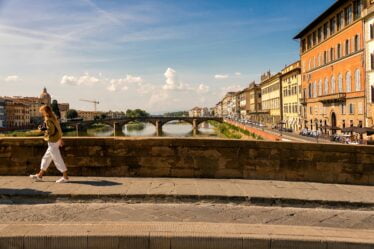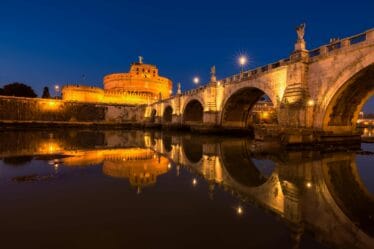
Via della Mosca is a historically significant street in Florence, Italy. Its name, “Mosca” (meaning “fly” in Italian), has a debated origin, possibly relating to a family name or a sign. Situated in Florence’s historic center, it has evolved through centuries, closely tied to the city’s development.
Here’s a brief history of Via della Mosca:
1. Early Development
- Medieval Period: Via della Mosca, like many streets in Florence, developed during the Medieval period as part of the dense urban fabric surrounding major landmarks like the Ponte Vecchio. The street may have initially been narrow and winding, characteristic of medieval Florence.
- Significance: Its proximity to the Arno River made it a key route for commerce and daily activities related to the river’s usage.
2. Renaissance and Expansion
- Renaissance Influence: During the Renaissance, Florence underwent significant urban and architectural transformations. Via della Mosca likely saw improvements and increased importance due to the flourishing trade and artisanal activities in the area.
- Architecture: Buildings along the street may have been updated or constructed to reflect Renaissance architectural styles, contributing to the aesthetic and functional layout seen today.
3. Economic and Social Hub
- Commercial Activities: The street served as a hub for commercial activities, with various shops and workshops. Its location near Ponte Vecchio, a crucial commercial bridge, further emphasized its role in the local economy.
- Social Fabric: Via della Mosca played a role in the social fabric of Florence, housing artisans, merchants, and other working-class residents who contributed to the city’s vibrant economic life.
4. Modern Era
- 19th and 20th Centuries: In the modern era, Florence experienced changes due to industrialization and urbanization. Via della Mosca likely saw transformations to accommodate modern infrastructure while retaining its historical charm.
- Conservation: Efforts to preserve Florence’s historic center, a UNESCO World Heritage site, have included streets like Via della Mosca, maintaining their historical significance while integrating modern necessities.
Notable Aspects
- Proximity to Landmarks: Via della Mosca’s close proximity to significant landmarks like the Uffizi Gallery and Ponte Vecchio highlights its importance in Florence’s historical and cultural landscape.
- Cultural Evolution: The street reflects Florence’s evolution from a medieval commercial hub to a Renaissance cultural center and into a modern city balancing history and contemporary needs.
Current Status
- Tourist Attraction: Today, Via della Mosca attracts tourists who explore its historical context and architectural heritage, contributing to Florence’s tourism-driven economy.
- Preservation: The street remains preserved as part of Florence’s commitment to maintaining its historical urban landscape while accommodating the modern flow of residents and visitors.
Conclusion
Via della Mosca is emblematic of Florence’s layered history, showcasing its development through medieval commerce, Renaissance expansion, and modern conservation efforts. Its narrow, historic charm provides a window into the daily life of Florence across centuries, making it a significant part of the city’s urban and cultural fabric.



